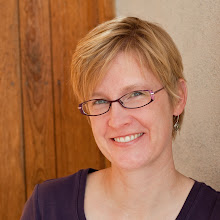This one was really fun. I visited on July 18th. We were on Prince Edward Island and had been looking forward to visiting this mill since our innkeeper told us about it. The wool mill is on the west end of the island and has been running for generations.
It isn't the tourist sort of place (which I greatly appreciated--authenticity rang from every greasy, noisy corner). You can poke around but you have to ask someone and I found that identifying yourself as a weaver helps you get into the corners where there are signs like, "No access to the weaving room without authorization." Fortunately (or unfortunately) for me, the looms were being repaired and warped and were not running so they had no problem letting a clumsy American into this room to see the machines.
Those burlap sacks to the left? They are full of wool and at least 6 feet long. That pile of wool in the middle ground was just chopped up with a huge machine--something to do with cleaning, though I didn't quite understand and there wasn't anyone right there who I could ask--they couldn't have heard me anyway in the din.
Some of the wool comes from sheep on PEI, but the helpful MacAusland who answered some of my questions (in the much quieter weaving room) said that they could process all the wool on the island in a matter of days, so it has to come from elsewhere. Here it is being carded and made into roving.
This is something called pencil roving which is being spun into yarn. I missed the step where the flat bats of carded wool get turned into this skinny pencil stuff you see on those long top rollers. The spools of spun yarn are down below. Note woman to the right for scale.
The yarn which goes onto spools from the spinning is put onto cones.
Talk about sectional warping. This beam was getting ready to be warped in exactly the same way I would warp my sectional back beam, only look at the diameter of that thing. Look at the loom photo later and you can see a full beam. That is a whole lot of warp.
These are the cones leading to the back beam they are warping. They must use a forklift to get the loaded beam back to the loom (which is in a building on the other side of the property incidentally).
They dye the fleece, not the yarn. Here is a vat of green fleece. The side of that tub is probably about 5 feet high. There is a lot of fiber in there (of a particularly virulent green color).
Bales of fleece ready to be spun (again--a huge amount. Bales are probably 4 feet square. If I were still in Canada I would try to convert that to metric, but I have since returned to the USA where we use the antiquated English system which I suspect the English don't even use anymore and I haven't the energy for it.)
This is not my grandmother's loom. The weaver was 7th generation working at this mill, of Scottish descent. Look at the amount of warp on that loom. She was sitting inside the loom and tying the ends of the new warp to the old one.
This loom had a plaid warp on it. They had some lovely plaid blankets, one of which came home with me.
I was unreasonably excited by this visit to the mill. I am easily pleased.
 |
 |
| One of the many lighthouses on PEI. This one was near our B&B, Briarcliffe Inn. |


















I love MacAusland's...thanks for this renewal of a happy visit, many years ago. They weren't selling dyed yarns then but I bought lots to dye. They were SO nice there. I can still smell the wool and the carding oil. Mmmmmm. So happy you shared it with all of us.
ReplyDelete